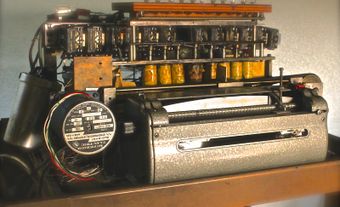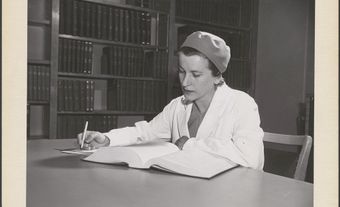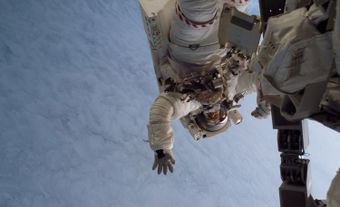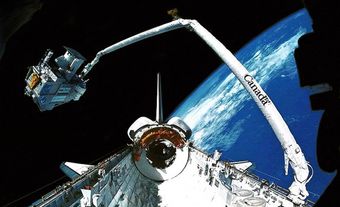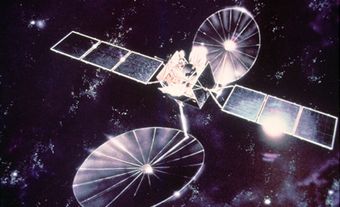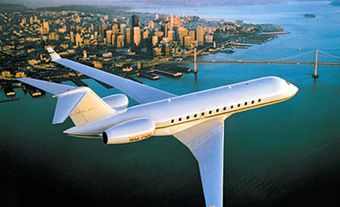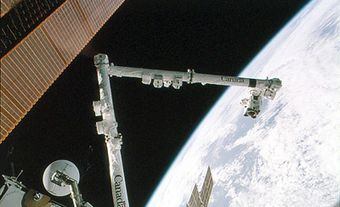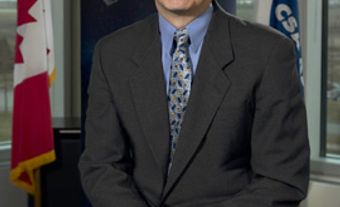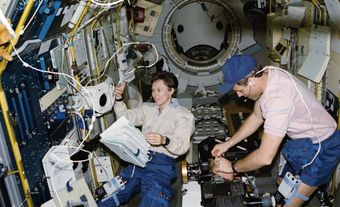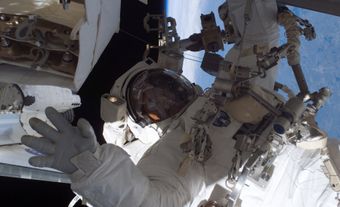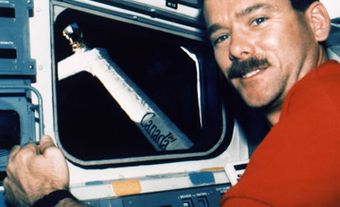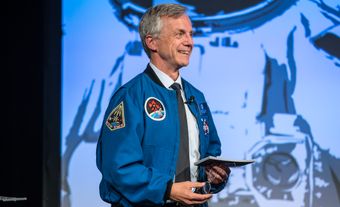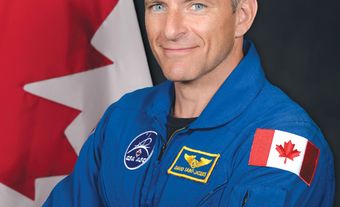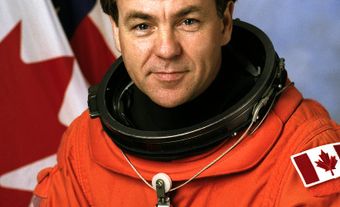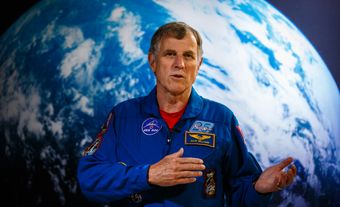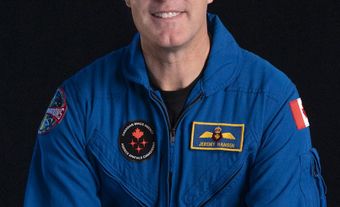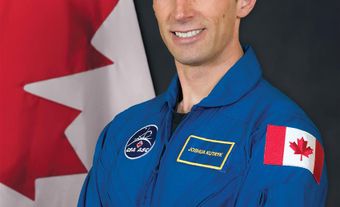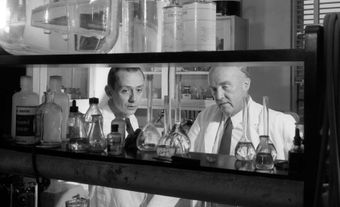Established in 1989, the Canadian Space Agency (CSA) promotes the peaceful use and development of space for the social and economic benefit of Canadians. It also coordinates federal government contributions to the CSA’s various partners in Canada and abroad. The agency’s current mandate includes the Canadian astronaut program, satellite development, space science and technology programs, space stations and robotics.
Click here for definitions of key terms used in this article.

Background
Before the creation of the CSA in 1989, Canada’s investments in space activities came from multiple federal government departments. These included departments that oversaw scientific research, defence, natural resources and satellite communications.
In early 1959, NASA approved a proposal from Canada’s Defence Research Board to build the Alouette 1 satellite. The purpose of Alouette 1 was to study the ionosphere, a layer above Earth’s atmosphere. NASA launched the satellite into orbit on 29 September 1962. This made Canada the third nation (after the USSR and the US) to design, build and place into orbit its own artificial Earth satellite. Alouette 2 was launched on 29 November 1965 and other Canadian satellites soon followed.
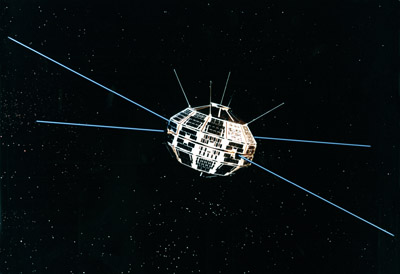
In 1962, the report of the Royal Commission on Government Organization recommended that Canada create a single space agency. The same recommendation came five years later in another federal government report, Upper Atmosphere and Space Programs in Canada (a.k.a. the Chapman report).
In 1982, NASA sought international partners to help build what would eventually become the International Space Station (ISS). The Americans considered a Canadian contribution important enough that, in exchange, they offered Canadian astronauts opportunities to fly on US space missions.
In 1983, a screening committee of the National Research Council interviewed applicants and selected six people to become Canada’s first astronauts.
Did you know?
Marc Garneau became the first Canadian in space in October 1984, on the space shuttle Challenger flight STS-41-G.
In 1985, Prime Minister Brian Mulroney accepted US president Ronald Reagan’s invitation to take part in the ISS program. This created more opportunities for Canadian astronauts.
The CSA was established in March 1989 and Larkin Kerwin was made the organization’s first president. The legislation that created the CSA received royal assent in May 1990 and the Canadian Space Agency Act was passed by the Government of Canada in December 1990.
Canadian Astronaut Program
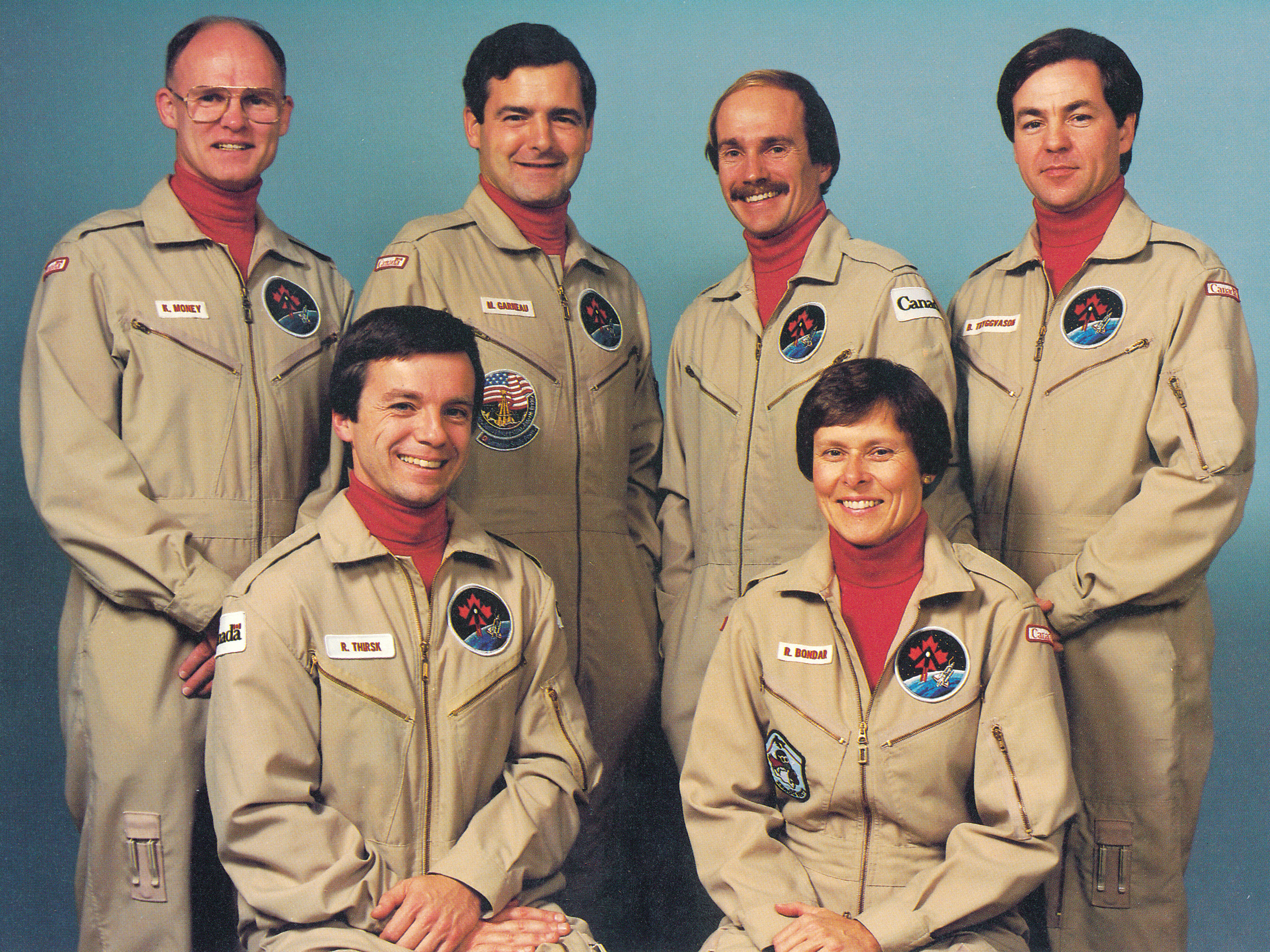
The CSA is currently responsible for the Canadian astronaut program. The astronaut program was founded in 1982 and originally managed by the National Research Council, but it was transferred to the CSA when the agency was formed.
The program selects and trains Canadian astronauts and manages their space flights. Since the first group of astronauts in 1983, the CSA has recruited three more groups in 1992, 2008 and 2016.
Fourteen Canadians have completed astronaut training. Of these, nine have participated in 17 missions to space: Marc Garneau (1984, 1996, 2000), Roberta Bondar (1992), Steve MacLean (1992, 2006), Chris Hadfield (1995, 2001, 2012–13), Bob Thirsk (1996, 2009), Bjarni Tryggvason (1997), Dave Williams (1998, 2007), Julie Payette (1999, 2009) and David Saint-Jacques (2018–19).
There are currently four active Canadian astronauts: Jeremy Hansen, David Saint-Jacques, Joshua Kutryk and Jenni Gibbons. No earlier than September 2025, Jeremy Hansen will take part in the NASA-led Artemis II mission. Jenni Gibbons will serve as backup astronaut for the mission. Joshua Kutryk will take part in the Starliner-1 mission and travel with NASA astronauts to the International Space Station no earlier than the beginning of 2025.
Satellite Development
Satellite programs are a major part of the CSA’s activities. RADARSAT, a remote sensing satellite jointly developed by Canada and the US, was launched in 1995 and operated until 2013. It used advanced microwave technology known as synthetic aperture radar (SAR) that can pierce fog, darkness and clouds.
RADARSAT-2, launched in 2007 and still in use, provides high-resolution images of Earth using improved SAR technology. These images help scientists manage natural resources and monitor the environment. The RADARSAT Constellation Mission, a fleet of three identical SAR satellites launched in 2019, is Canada’s latest generation of Earth-imaging satellites.
At the David Florida Laboratory in Ottawa, the CSA builds and tests satellites and other space hardware. It has “clean rooms” for assembling parts in an environment free of dust, moisture and micro-organisms. Such contaminants could cause hardware to fail in space.
Since 2017, the Canadian CubeSat Project has offered colleges and universities across Canada the chance to take part in a real space mission. Teams of professors and students design, build, launch and operate their own miniature satellites.
Space Science and Technology Programs
Canadian scientists and engineers take part in international space missions through the CSA’s space science and technology programs. Experiments in space physics, astronomy, atmospheric chemistry, materials and life sciences have been flown on satellites and space shuttles. In many cases, Canadian astronauts have done experiments on behalf of Canadian researchers.
The CSA’s space technology program funds Canadian universities to develop new, advanced technologies for use in space.
Space Stations and Robotics
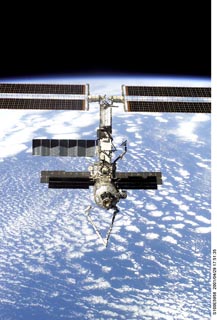
The CSA’s most significant partnership is with the group of nations that support the International Space Station (ISS). The ISS is a permanently occupied base for science and technology research that orbits 400 km above the Earth’s surface. Canada, 11 European nations, Japan, Russia and the US have all contributed to the ISS since its first module launched in 1998.
Canada’s main contribution is Canadarm2, a large robotic arm launched to the ISS in 2001. Canadarm2 was built by a consortium of Canadian aerospace companies led by Spar Aerospace Ltd. of Toronto (now MDA, a Maxar company). It has been used to assemble the space station, move cargo and supplies, repair and replace parts and help dock space shuttles to the station.
Did you know?
The original Canadarm flew on board space shuttles for 30 years, from 1981 to 2011. It deployed, captured and repaired satellites, positioned astronauts, maintained equipment and moved cargo.
In February 2019, Prime Minister Justin Trudeau announced that Canada will become the first country to partner with the US on the Lunar Gateway program, a space station that will orbit around the Moon. While NASA promotes and manages this program, it expects to partially fund the station with contributions from various countries. Trudeau said Canada would contribute C$2.05 billion over 24 years. The CSA will administer the funds, most of which will go to an improved third-generation Canadarm (Canadarm3), a smart robotic system that will use advanced software and artificial intelligence technology to help maintain the space station. It is anticipated that the Canadarm3 will be delivered to the space station in 2027.

An artist’s concept of Canada’s smart robotic system located on the exterior of the Gateway, a small space station in orbit around the Moon.
(Credits: Canadian Space Agency, NASA)
Key Terms
Expedition – In the context of space exploration, an expedition refers to a long stay (typically about six months) on the International Space Station.
International Space Station (ISS) – A permanently occupied base for science and technology research that orbits 400 km above the Earth’s surface.
National Aeronautics and Space Administration (NASA) – The space agency of the United States. The Canadian Space Agency has partnered with NASA since 1982 to send Canadian astronauts to space on NASA-led missions.
Space Transport System (STS) – NASA’s space shuttle program. Missions on board NASA space shuttles are identified with the abbreviation STS and a number, e.g., STS-77, STS-99. Shuttle missions typically last one to two weeks.

 Share on Facebook
Share on Facebook Share on X
Share on X Share by Email
Share by Email Share on Google Classroom
Share on Google Classroom
